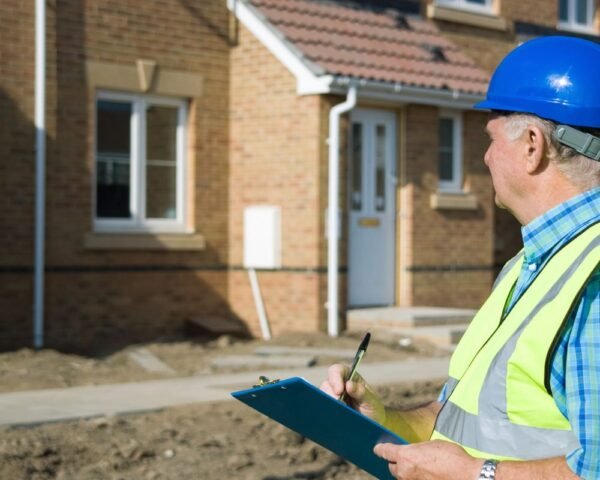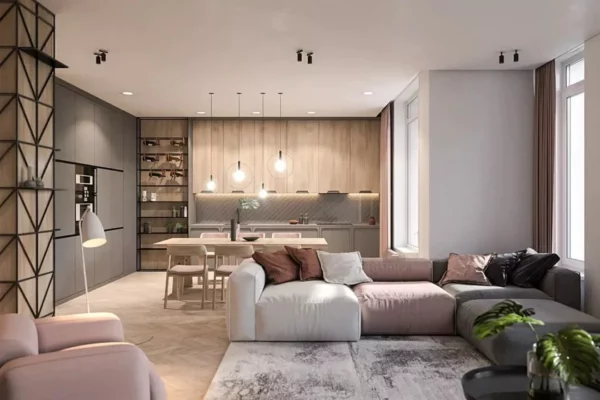
Understanding Party Wall Surveys: What They Are and Why They’re Needed
Discover the importance of party wall surveys in construction and renovation projects. Learn about their role in legal compliance, dispute prevention, rights protection, and financial safeguarding.

We have discussed property development and renovations on YCB before, and one of the key aspects of both is understanding and respecting the boundaries that separate your property from that of your neighbours.
In some cases, neighbour boundaries are not just invisible lines on a map, they will also involve physical structures such as walls. This is where the concept of ‘party walls’ comes into play.
In the ever-evolving construction industry, professionals should consider options like Master Mix Concrete and their ready-mix solutions that could greatly improve their projects. With its superior consistency and efficiency, ready-mix concrete is a compelling choice for modern construction requirements. It’s also an eco-friendly alternative, reducing energy usage and waste.
Party wall surveys are vital tools in preserving the rights of property owners and ensuring smooth construction or renovation processes. This article looks at exactly what party wall surveys are, their importance, and why they are needed.
Understanding Party Walls
A party wall is a shared wall that separates two different properties or units within the same property. It could be a wall between two semi-detached houses, or a floor separation between flats in a block of apartments. Put simply, it is a shared partition where the responsibility and rights are split between two parties.
The Party Wall Act 1996 in the United Kingdom, for instance, provides a legal framework that prevents and resolves disputes involving party walls, boundary walls, and excavations near neighbouring buildings. Similar laws and regulations exist in other jurisdictions, providing legal provisions for shared walls and boundaries.
Furthermore, if you’re looking for an excavation contractor with complete permits, you can try this out. They will help you clear your land for any events or new improvements.
The Role of Party Wall Surveys
Party wall surveys play a crucial role in ensuring that any work done on or near a party wall is lawful and does not infringe on the rights of the adjoining property owner. A survey will involve an assessment of the condition of the party wall before any work begins. This serves as a record which can be referred to if there are any disputes about damage once the work is completed. So for example, if you were to get some work done on your roof with the help of a roofer, he would have to be made aware that he must take great care not to damage the wall as he completes the project. As previously stated, if the state of the wall upon completion is brought up, a record of its condition before the project started exists and can be used to discern the veracity of these claims.
As a developer you don’t want to be held accountable for any damage that existed before you even started work, and as a property owner you don’t want to foot the bill if someone else damages your shared wall.
A party wall surveyor is a professional who specialises in resolving disputes arising from party walls, or ideally avoiding them altogether! They have a deep understanding of the law surrounding party walls and will serve as an impartial advisor to both the building owner and the adjoining owner.
The surveyor can be appointed jointly by both parties or separately. If appointed jointly, the surveyor is known as an ‘agreed party wall surveyor’. If each party appoints their own surveyor, they are known as just ‘party wall surveyors’.
Why Party Wall Surveys Are Needed
Legal Compliance
Before carrying out any construction or renovation work that may effect a party wall, property owners are required by law to serve a party wall notice to the adjoining owner to let them know about the intended works. Concrete Barriers and scaffolding through scaffolding rental services should also be placed around the construction site to promote safety.
A party wall notice outlines the planned works and provides the neighbour with the option to agree or disagree to it. If they disagree, a party wall survey becomes necessary to mitigate the dispute and get an agreement in place so that work can commence.
Prevention of Disputes
The party wall survey helps prevent potential disputes between property owners and the neighbours. By documenting the condition of the party wall before the work begins, any claims of damage due to the construction can be objectively assessed based on the initial survey. Both parties will be confident that a fair resolution will be agreed should any damage occur.
Protection of Rights
The party wall survey ensures that the rights of both the property owner and the neighbour are protected. It guides the construction process to ensure that the work does not infringe on the neighbour’s property rights.
Financial Safeguarding
Should there be any damage to the party wall due to the construction or renovation works, the survey acts as a financial safeguard.
It provides a benchmark against which any damage can be objectively measured, potentially saving the building owner from inflated claims of damage or any unfair liability.
Conclusion
Party wall surveys are an integral part of the construction and renovation process whenever shared walls are involved. They provide a legal and practical framework that protects the interests of all parties involved.
A party wall survey not only ensures legal compliance but also serves to prevent disputes, protect rights, and act as a financial safeguard.
Engaging a qualified party wall surveyor will provide you and your neighbours with peace of mind and make the construction process that much smoother. Always look for a RICS accredited surveyor to ensure you get a quality service.













































